- About Us
-
Who we are
-
- Publications
-
- ADPC Academy
-
MediaADPC'S NEWS
World Humanitarian Day: a time to stand together World Humanitarian Day: a time to stand together
19 Aug 2016
Bangkok, Thailand
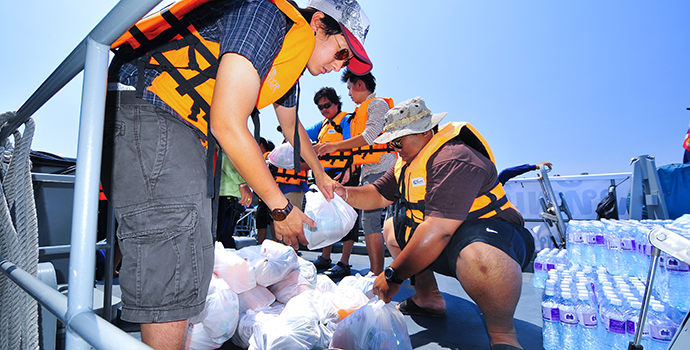
Thai military deliver aid during the 2011 Southeast Asia floods to a flood stricken area of Ayuttaya, Thailand, on 22 October 2011.
Photo Credit: pornvit_v / Shutterstock.comAs humans, sometimes our fears put us against each other. World Humanitarian Day is a time to stand up against these fears and become more tolerant and gracious towards those in need for the sake of humanity. Thousands of aid workers leave their homes to help millions of people displaced by conflict and disasters. World humanitarian day is the best occasion to not only become more charitable, kind, and thoughtful, but also to think about the conditions that put ordinary people and aid workers at risk.
On World Humanitarian Day, Asian Disaster Preparedness Center pays homage to the victims of conflicts and disasters and deeply acknowledges the sacrifices of aid workers. ADPC pledges to stand by the 125 million people affected by conflicts and disasters and pays tribute to all the humanitarians who are working for the humanity in dangerous situations.
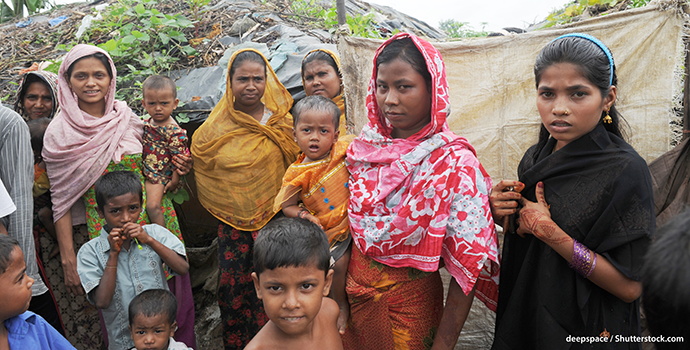
Children and women in a refugee camp in Bangladesh on 20 August 2012. Photo credit: deepspace / Shutterstock.com“Risking their lives, humanitarian workers go deep into highly dangerous conflict-hit areas to help victims where media’s spotlight fails to glare,” said Dr. Jingjai Hanchanlash, Executive Director a.i., ADPC. “125 million are in dire humanitarian need including 60 million forcibly displaced due to conflicts,” he added.
“We owe it to these humanitarian workers as well as victims of conflicts, to push the need to invest more in disaster mitigation and conflict resolution to avoid major humanitarian crisis,” said Dr. Hanchanlash.
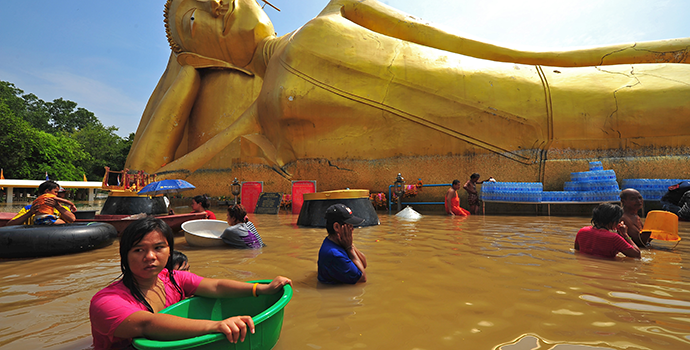
Satoe temple in Ayutthaya, Thailand, is affected by flooding on 21 October 2010. Photo credit: think4photop / Shutterstock.comDuring the World Humanitarian Summit in Istanbul 2016, five core area of responsibilities were adopted to guide aid work in the future. ADPC gives equal importance to responsibilities three and four – reaching and empowering all and ending the need for aid by boosting resilience – through its work in the Asia Pacific.
These areas clearly draw the attention of the international community towards shifting their focus from delivering aid to ending the need, and from funding to financing in anticipation of disaster rather than waiting for it. Currently, disaster and crisis mitigation is not receiving due attention as it is not even one percent of the global aid budget on disaster mitigation.
The growing number of humanitarian crisis is pushing the aid agencies to their limits. The current situation is nowhere near an end, as more people are being displaced due to disasters as well. “We can link displacement to climate change-related hazards, which pose an extraordinary threat of a massive humanitarian crisis in future that may go beyond the coping capacity of the international community if not mitigated in time,” said Dr. Hanchanlash.
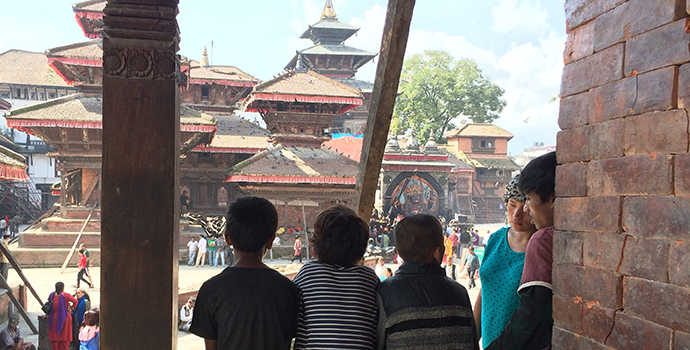
Children look on toward Durbar Square, a world heritage site in Nepal, affected by the April 2015 Earthquake.Trends show that disasters are effecting more people than conflicts. According to the 2016 Global Report on International Displacements, 14.7 million people were displaced by hydrometeorological disasters whereas 8.5 million were displaced by conflict in 2015 alone.
On World Humanitarian Day, ADPC pledges its support to the cause of aid workers and reiterate its commitment to continue playing its role in disaster mitigation in the Asia-Pacific region.
ADPC helps government to mitigate hazards and be prepared if they turn into a disaster. ADPC has been working with humanitarian workers to help them increase their knowledge about public health issues in emergencies. ADPC has also built the emergency response capacities of volunteers in many countries in Asia and the Pacific. Community Action for Disaster Response (CADRE) training under the Program for Enhancement of Emergency Response (PEER) in 2013 was a flagship program of ADPC on disaster Preparedness.
Core areas outlined in humanitarian summit has provided the aid agencies and disaster mitigation organization to work hand in hand for a safer and better world.
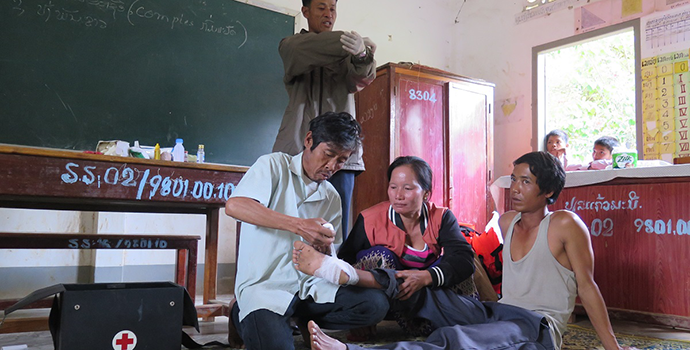
Participants learn basic first aid skills during an ADPC training course.
Latest NewsRelated Trainings
-